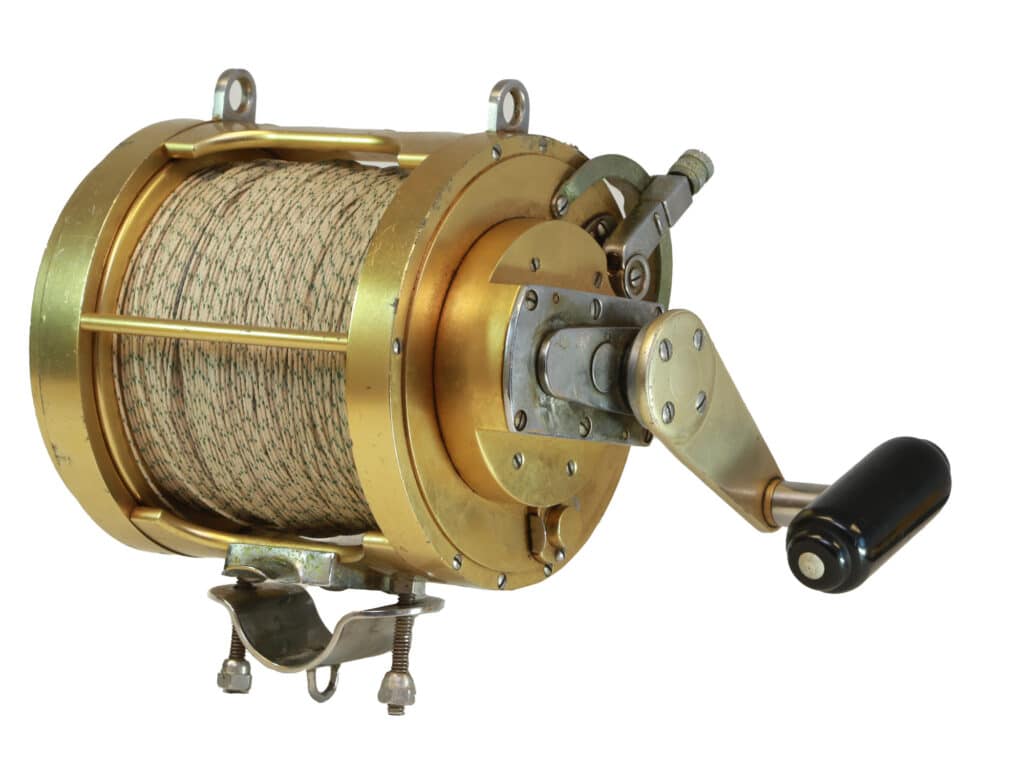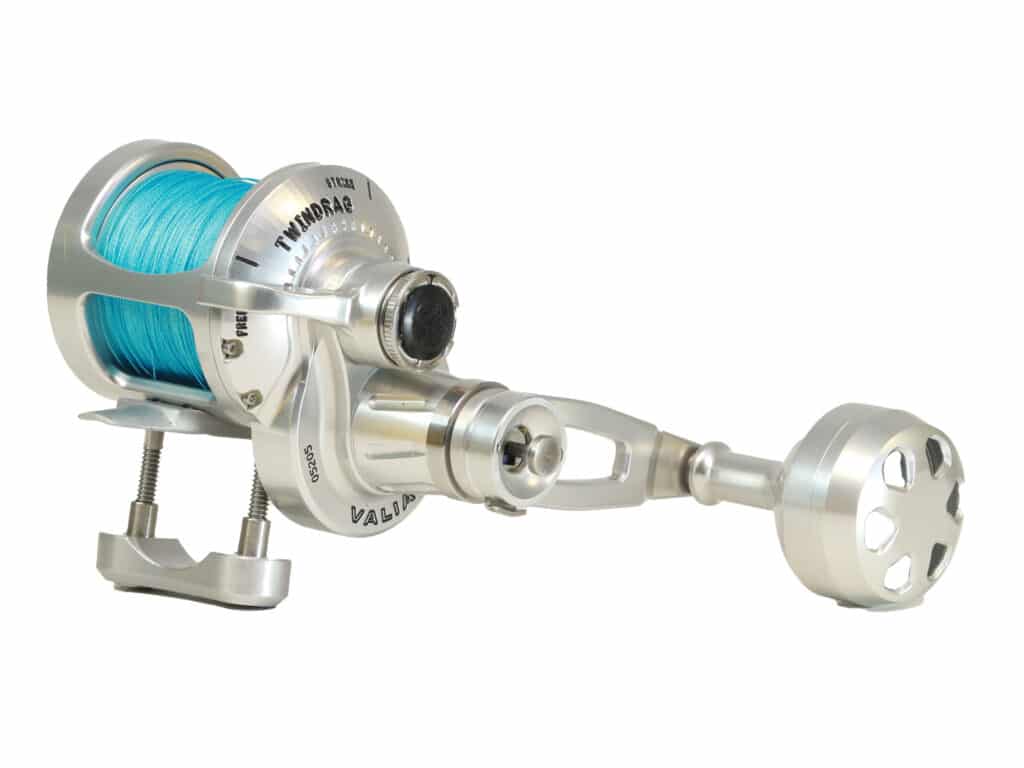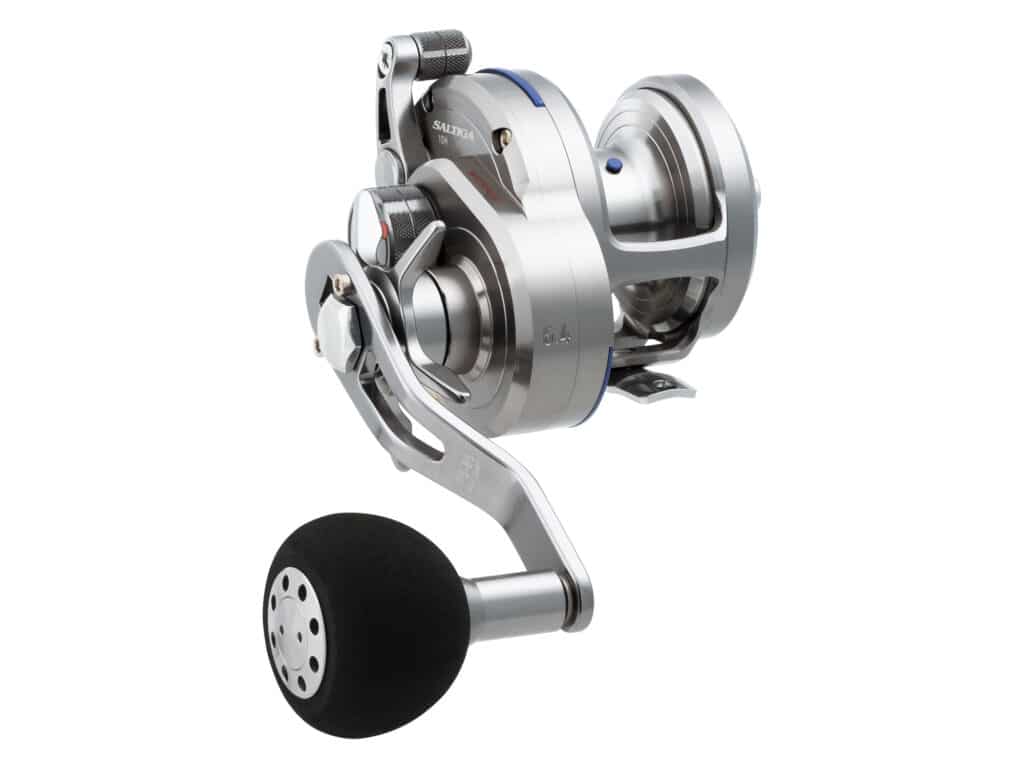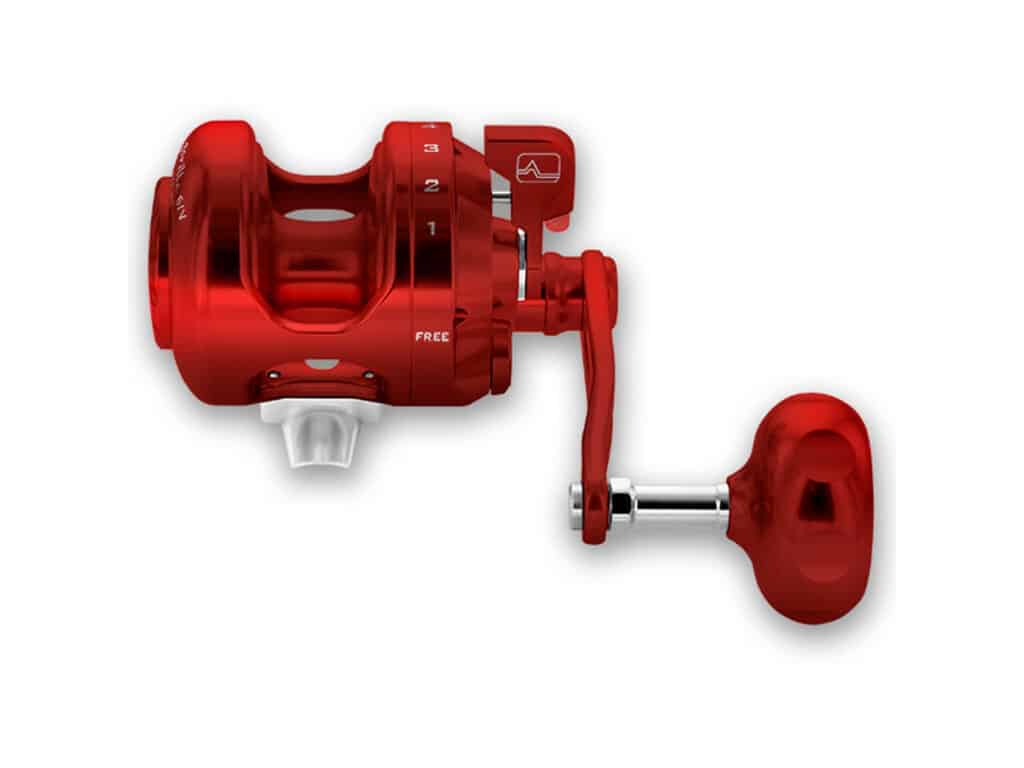
You can just about stop a truck with a conventional reel that fits in the palm of your hand these days, but when big-game fishing was in its infancy, reels were little more than direct-drive winches. The evolution took a little over 100 years, but now anglers can beat 1,000-pound fish with reels that weigh mere ounces.
W.H. Wood was widely credited with the first rod-and-reel tarpon, a 93-pounder taken at the mouth of Florida’s Caloosahatchee River in 1885. While landing a silver king of that size is a feat, it is even more impressive when the angler is using their fingertips and a patch of leather to slow the reel’s spinning spool. This accomplishment inspired New York-based tackle manufacturer Edward vom Hofe to develop a reel with an internal drag system that utilized friction to slow a fish’s run, which he employed to catch tarpon of his own.
Edward’s brother, Julius, would run with his design, crafting a larger and stronger reel that could handle even tougher fish. C.P. Morehouse of the Tuna Club of Avalon would use one of Julius’ reels to land a then-record 251-pound bluefin tuna off the coast of Catalina in 1899. The first rod-and-reel marlin was caught a few years later by fellow Tuna Club member Edward Llewellyn, though the reel he employed has been lost to history.
George Washington Blackburn patented the first anti-reverse system in 1907, eliminating the busted knuckles that accompanied battles with big fish. This created an arms race among tackle manufacturers, with Pflueger and Edward vom Hofe offering their own versions. Others quickly followed suit.
The advent of the star drag in 1913 allowed anglers to adjust drag pressure on the fly for the first time, greatly aiding their ability to land fish with the linen lines of the time. The brainchild of Tuna Club member William C. Boschen and developed in conjunction with reel-makers Julius vom Hofe and Joe Coxe, Boschen used one of the first star-drag models to land a 315-pound broadbill swordfish.
But perhaps two of the greatest innovations in big-game reels came from the shop of Fred Grieten, better known as Fin-Nor reels. Grieten, a mechanic by trade, created a powerful lever drag based off the drum brake systems found in automobiles of the day, which was proven against Nova Scotia’s giant bluefins in 1935. He also developed the world’s first two-speed reel in 1937, with a low gear that gained ground against bulldogging fish and a high gear that quickly recovered line.
How good was the Fin-Nor design? Good enough to land one of the heaviest fish of all time. Alfred C. Glassell Jr. used one to best a 1,560-pound black marlin off the coast of Cabo Blanco, Peru, on August 4, 1953. This impressive fish remains the IGFA All-Tackle and 130-pound line class world record for the species.

The Next Generation
The big-game reels of yesteryear certainly defeated some very impressive fish. But they were big and bulky, often fatiguing the angler as much as the fish. Thanks to advances in manufacturing processes and technology, tackle companies were able to produce smaller reels capable of handling tuna, billfish and bottomfish roughly the size of a motorcycle.
“Fishing evolved with the introduction of Spectra fishing line,” says Ben Secrest, vice president of marketing for Accurate Fishing. One of the reasons big-game reels had to be so large was to contain the vast amounts of line needed when pelagic bruisers took off. The smaller diameter of the braided lines eliminated the need for giant spools and the frames to contain them. And space-age design helped make the most of this.

“The computer modeling we use lets us take advantage of every square inch of a reel,” says Ben Joyce, senior product manager at Penn. He believes that the ability to lay out a reel design in three dimensions was one of the biggest advancements in the quest for small but powerful reels. “We mapped out the internals, and then shaped the outer casing around them to provide the smallest footprint possible.”
“We looked at a big reel and analyzed what components made it work,” says Secrest, who notes that manufacturers couldn’t just shrink existing designs and hope for the best. “The frames and spools had to be sturdier. We also employed better bearings that are smoother and better stand up to tough fish.”
Taking these designs from a computer screen into reality required high-tech manufacturing procedures. “Advances in CNC machine processes have made it possible to create reels with extremely tight tolerances that ensure the intricate gearing required for two-speed systems works correctly, with no slip, even under extreme pressure,” says L. Mason Featherston, of Alutecnos reels.
Read Next: Small Powerful Reels Handle Big Fish

“All-metal reel bodies keep the components aligned under extreme pressure,” says Blaine Anderson, saltwater product marketing manager for Shimano. “With no flex in the reel, the angler fights the fish—not the gears,” says Anderson. “Shafts were another area of concern,” says Featherston, noting that Alutecnos beefed up this vital component enough to tackle “granders.”
Drag systems were another big area of improvement, with even the smallest reels putting out incredible amounts of drag. Accurate uses a system that applies pressure to both sides of the spool, effectively pinching it in the middle. Secrest says you can just about lock up one of Accurate’s spools, but any reel that puts out 18 to 36 pounds of pressure should do the trick on most species.
Anderson says it’s not just the amount of drag that modern reels create, but how smoothly they create it that is the key to their success. Even during an extended fight, modern drag washers dissipate heat and don’t bind. Shimano’s Cross Carbon washers ensure drag doles out smoothly, protecting lines against surging fish.
So, what’s the biggest advantage of the small-reel revolution? It’s fun. According to Secrest, “Smaller reels make fishing more enjoyable because you can focus on the fish and not your gear.”









